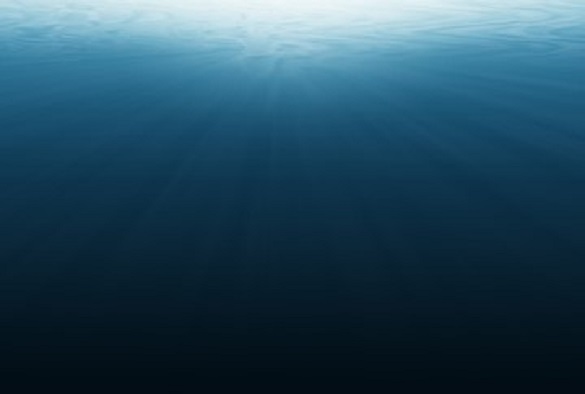New insights into the cycling of iron in the ocean’s twilight zone were revealed this week with the publication of two major research studies, both of which involved Liverpool ocean scientist Professor Alessandro Tagliabue.
The research findings, published in Nature Geoscience and Nature Communications, have important implications for the models used to assess the impact of climate change on marine productivity and ecosystem function.
The ocean’s twilight zone – known as the mesopelagic zone – is the layer of ocean below the sunlit upper ocean where little light penetrates, typically extending from around two hundred to a thousand metres in water depth.
In this zone, bacteria break down organic material that sinks from above, regenerating essential resources back into seawater that can be subsequently mixed back up to the surface to fuel phytoplankton growth.
The first study, led by Dr Matthieu Bressac at the Institute for Marine and Antarctic Studies (IMAS, Australia) and published in Nature Geoscience, used novel in situ observations to show that iron from organic sources regenerates up to 100 times more efficiently in cold Southern Ocean water dominated by living (known as biogenic) material than warmer Mediterranean waters that were more influenced by terrestrial (known as lithogenic) material.
Dr Bressac said: “We found that the efficiency of iron entering the deep ocean is significantly higher when iron fluxes are essentially biogenic than when lithogenic material is present.”
Professor Alessandro Tagliabue, who recently co-authored the IPCC climate change and oceans report, said: “When we used the results of the in situ measurements to modify a global model we found a significant change in the iron levels over the upper ocean. In particular, it became more difficult for winter time mixing to provide enough iron to the surface in regions where wind blown dust is significant.”
The second study, which was led by Professor Tagliabue and published in Nature Communications, used observations of iron and another essential resource phosphorus from a ship survey in the south Pacific Ocean to tease apart the magnitude of different processes driving iron regeneration in the mesopelagic.
Researchers found that while the regeneration of phosphorus could be easily explained by the amount of phosphorus sinking from above, the regeneration of iron appeared to be many times lower.
Professor Alessandro Tagliabue said: “We were surprised by these findings. As we brought together all other measurements of the iron content of sinking material and measured rates of bacterial activity, we seemed to always be vastly overestimating the iron levels that should be produced in the mesopelagic.
“The only way to reconcile our findings was to hypothesise that a large portion of the regenerated iron was removed, either by chemical processes or uptake by the bacteria themselves. These results imply that, even in regions not affected by desert dust, iron levels in the mesopelagic are a fine balance between a number of competing processes.
“We are now beginning to understand that there are significant unique aspects to the ocean iron cycle not currently captured by contemporary global climate models. For instance, if there were changes to the removal of regenerated iron, in response for instance to changing dust levels, then the iron supply to the upper ocean, where almost half of marine productivity relies on iron, would be altered.”
Professor Philip Boyd at IMAS who co-authored both studies said: “Better understanding marine iron distributions is important to inform models and predictions of likely changes in ocean chemistry and productivity as the climate changes.”
Image caption: Study area The southern part of the CLIVAR P16S ocean survey in the south Pacific Ocean, on a backdrop of water age (years) for the intermediate waters focussed on in the study. The individual stations used are marked with red crosses
The two research studies also involved researchers from Antarctic Climate and Ecosystems
CRC, the University of Hobart, the Australian National University in Australia, Florida State University, Bigelow Laboratory for Ocean Sciences, Skidaway Institute of Oceanography in the USA, New York University in Abu Dhabi, University of Plymouth in the UK, the Sorbonne University, Aix-Marseille University and the University of Western Brittany in France.
The paper `Resupply of mesopelagic dissolved iron controlled by particulate iron composition’, was published in Nature Geoscience (doi: 10.1038/s41561-019-0476-6)
The paper ‘The interplay between regeneration and scavenging fluxes drives ocean iron cycling’ is published in Nature Communications (doi.10.1038/s41467-019-12775-5).
Professor Tagliabue holds a European Research Council fellowship to better understand how environmental change affects ocean ecosystems, is UK Chair of the Scientific Commission on Ocean Research, is a member of the governing council of the UK Challenger Society for Marine Science.
He is also part of the GEOTRACES international research programme which aims to improve the understanding of biogeochemical cycles and large-scale distribution of trace elements and their isotopes in the marine environment.
